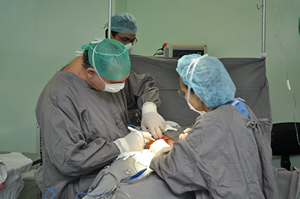Introduction
When we step into a hospital or consult a physician, we place our trust in their expertise and care. Unfortunately, there are instances when that trust is betrayed due to medical negligence. While proving negligence itself can be complex, the challenges of proving causation in medical negligence cases often complicate matters even further. This article delves deep into the intricacies involved in establishing causation—an essential component for any successful medical negligence claim.
Understanding Medical Negligence
What Constitutes Medical Negligence?
Medical negligence occurs when a healthcare professional fails to provide the standard of care that a reasonably competent practitioner would have provided under similar circumstances. This failure can result in harm or injury to the patient.
Elements of Medical Negligence
To establish a case of medical negligence, three key elements must be proven:
Duty of Care: The healthcare provider had a responsibility toward the patient. Breach of Duty: There was a failure to meet the required standard of care. Causation: The breach directly caused harm to the patient.The Importance of Causation in Medical Negligence Cases
Why Is Causation Critical?
Without establishing causation, even if there’s clear evidence of negligence, the case may fail. Causation links the negligent act to the injury and demonstrates that the injury would not have occurred but for that act.
Types of Causation
Actual Cause (Cause-in-Fact): Refers to whether the harm would have occurred if not for the negligent action. Proximate Cause (Legal Cause): Concerns whether it was foreseeable that such an act would lead to harm.The Challenges of Proving Causation in Medical Negligence Cases
Complexity of Medical Evidence
In many cases, complex medical evidence is required to substantiate claims. Expert testimony from qualified professionals is often necessary to explain how a breach of duty led directly to an injury.
Multiple Potential Causes
Often, injuries may arise from multiple factors or pre-existing conditions, making it difficult to pinpoint negligence as the sole cause.
Gathering Relevant Evidence
Medical Records and Documentation
Accurate and comprehensive medical records can play a pivotal role in establishing causation. However, these records need careful examination by legal experts familiar with medical terminology.
Expert Testimony: A Double-Edged Sword
While expert witnesses can bolster your case, they can also complicate matters if their opinions are contradictory or if they lack credibility.
Legal Standards for Causation
"But For" Standard vs. Substantial Factor Test
Different jurisdictions may apply varying standards for proving causation:
- "But For" Standard: The plaintiff must prove that but for the defendant's actions, the harm would not have occurred. Substantial Factor Test: Applied when multiple causes exist; it focuses on whether the defendant's action was a substantial factor in causing the injury.
The Role of Jurisdictions in Causation Cases
Variations Across States
Different states may impose unique requirements regarding how causation should be proven in court. Familiarity with local laws is crucial for legal practitioners.
Precedents and Case Law
Understanding past rulings on similar cases can provide insights into how courts interpret causation issues within specific jurisdictions.

The Emotional Aspect: Patient Experience
Psychological Impact on Patients
Patients suffering due to alleged medical negligence often experience emotional turmoil alongside physical ailments, which adds another layer to proving causation.
Navigating Insurance Companies
Insurer Tactics
Insurance companies often deploy various strategies to minimize payouts or deny claims altogether by questioning causality or downplaying injuries.
Common Misconceptions About Causation
“If It’s Not Obvious” Fallacy
Many people mistakenly believe that if an injury isn’t immediately apparent following treatment, it cannot be due to negligence—a flawed assumption that undermines rightful claims.
FAQs on Proving Causation in Medical Negligence Cases
Q1: What is meant by “causation” in legal terms?
A1: In legal terms, causation refers to establishing that one event (a negligent act) directly resulted in another event (the injury).
Q2: How long do I have to prove causation?
A2: Statutes of limitations vary by state; typically you have 1-3 years from discovering your injury caused by negligence.
Q3: Can I use my medical records as evidence?
A3: Yes, medical records are crucial pieces of evidence; however, they must be interpreted correctly through expert testimony.
Q4: What if multiple factors contributed to my injury?

Q5: Do I need an attorney specializing in medical malpractice?
A5: Yes! An experienced attorney can help navigate complexities related to proving causation effectively.
Q6: How much compensation can I expect if I prove causation?

Conclusion
Proving causation remains a significant hurdle in medical negligence cases—one that requires not just clear-cut evidence but also strategic navigation through murky waters filled with emotional weight, technical jargon, and varying legal standards. Understanding these challenges equips both victims and advocates with knowledge essential for pursuing justice effectively within this intricate field.
This article has covered various aspects surrounding the challenges of proving causation in medical negligence cases, shedding light on why it's such a formidable task while offering insights into navigating these complexities successfully.